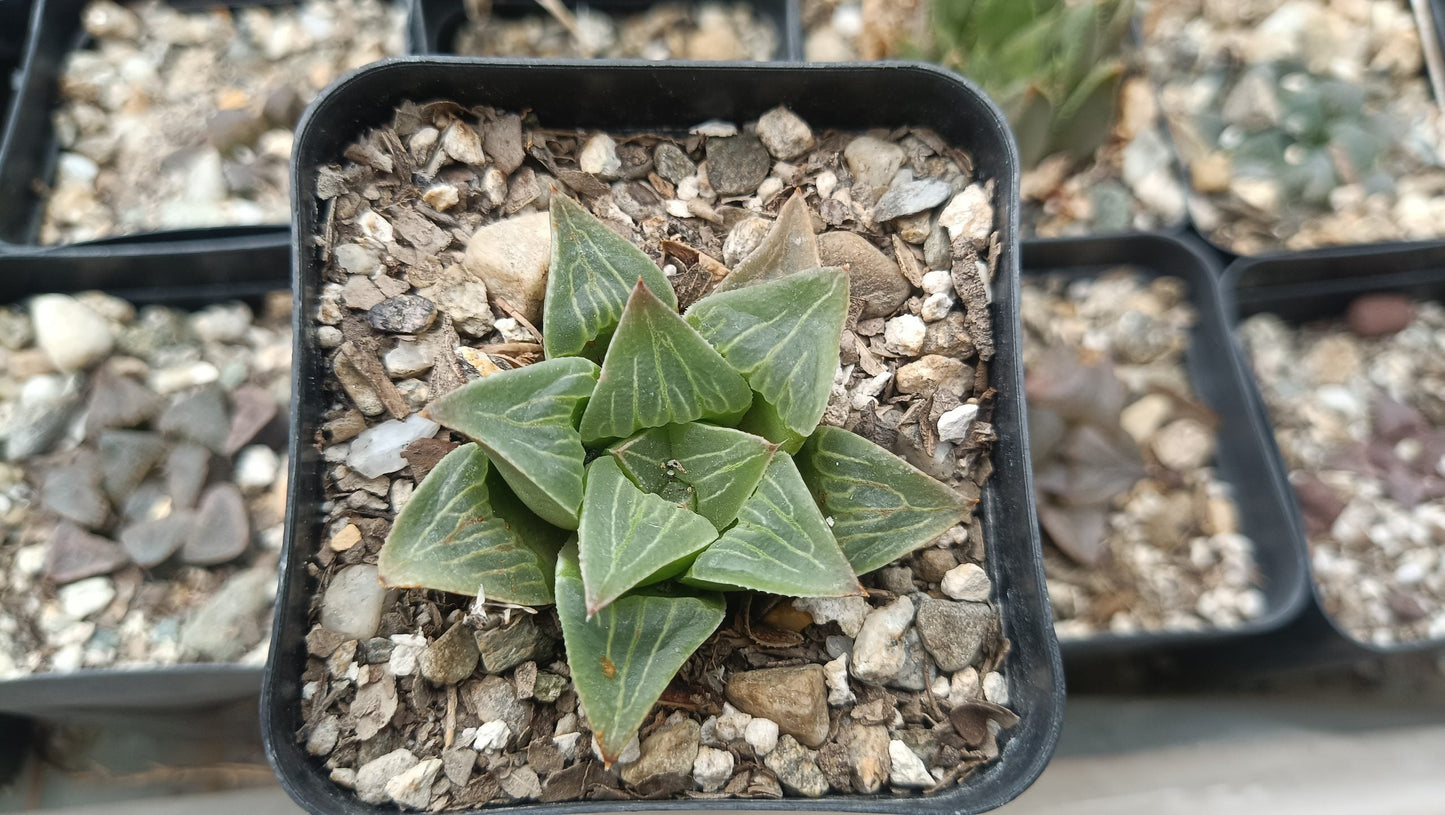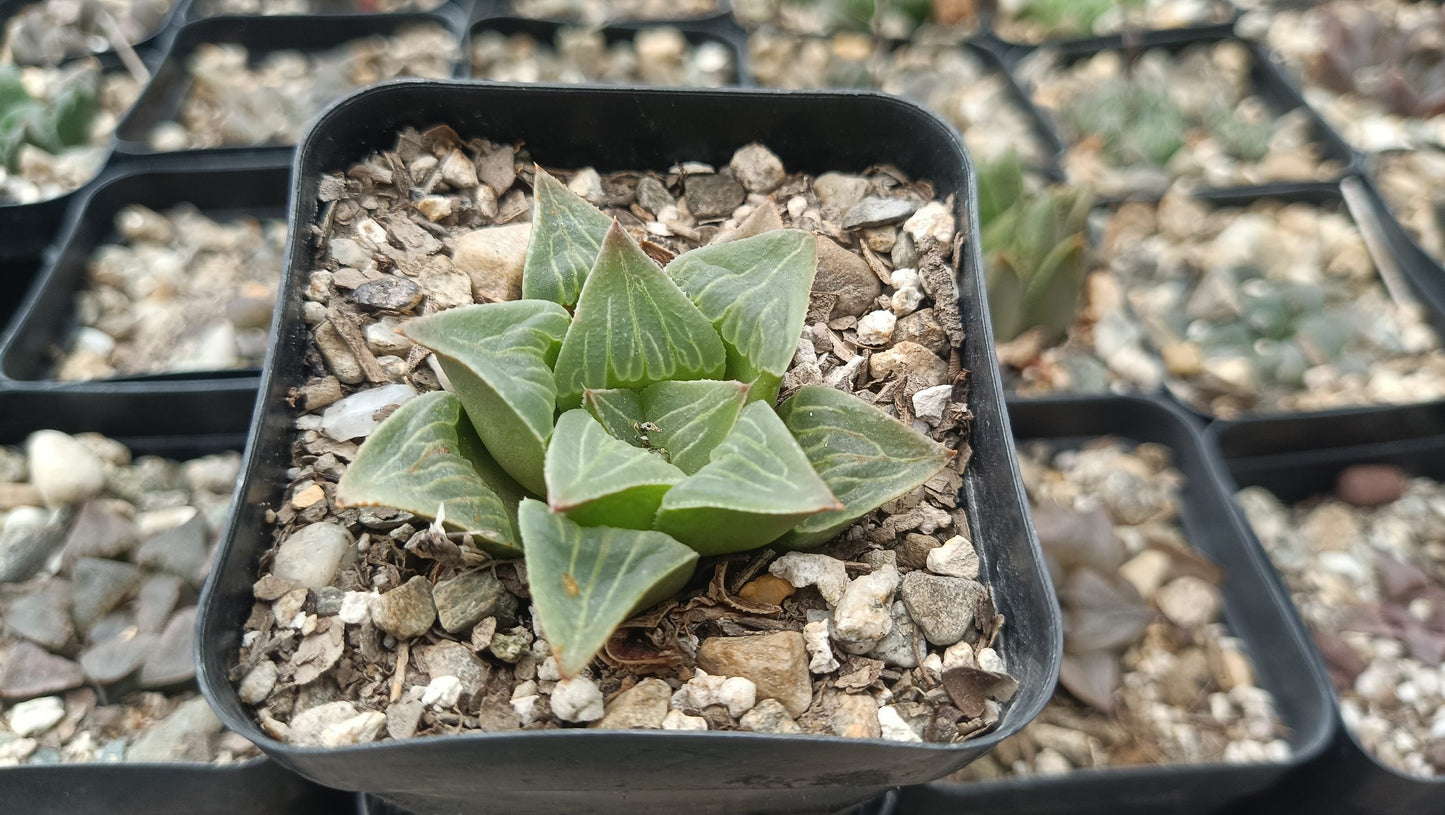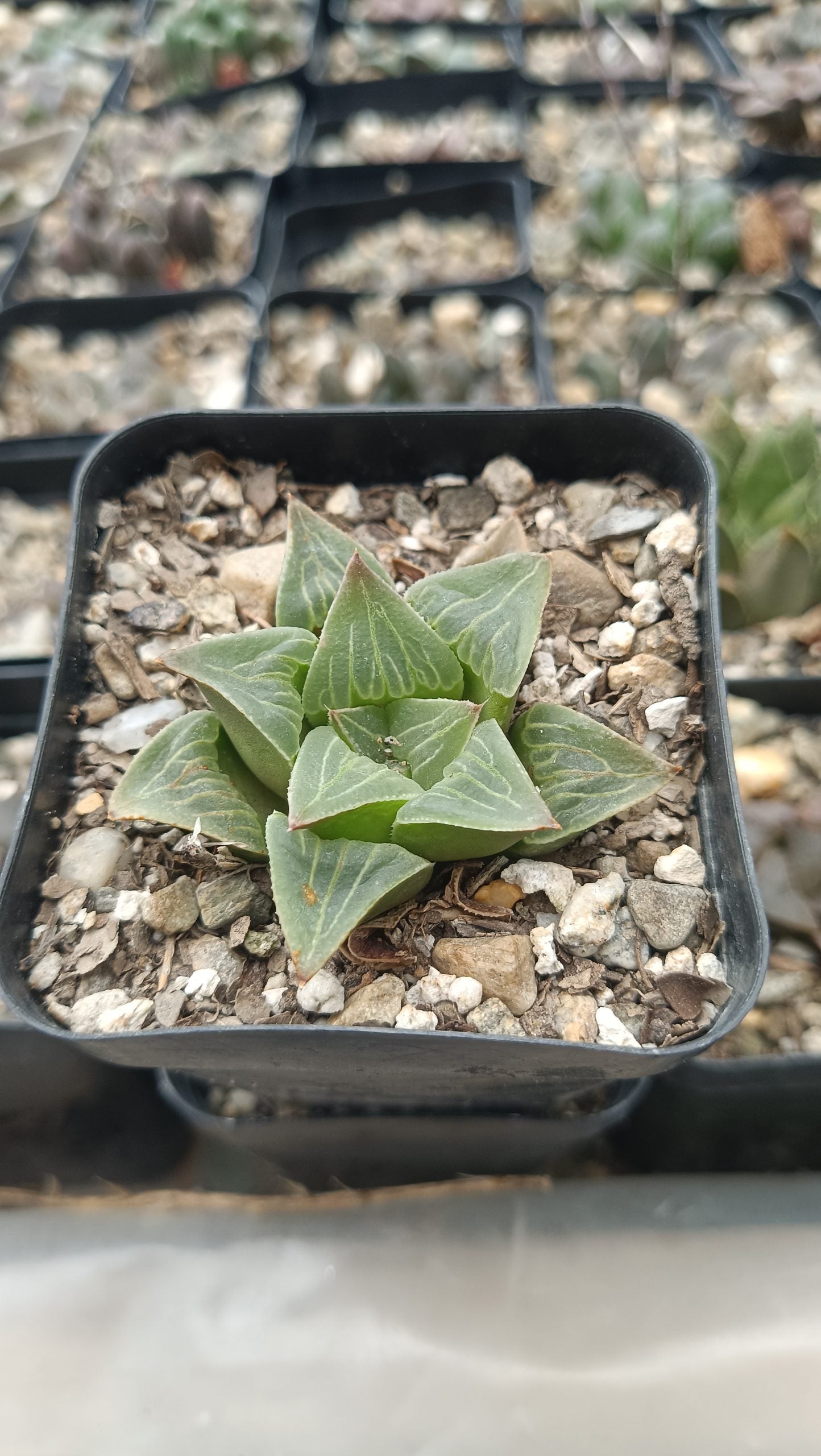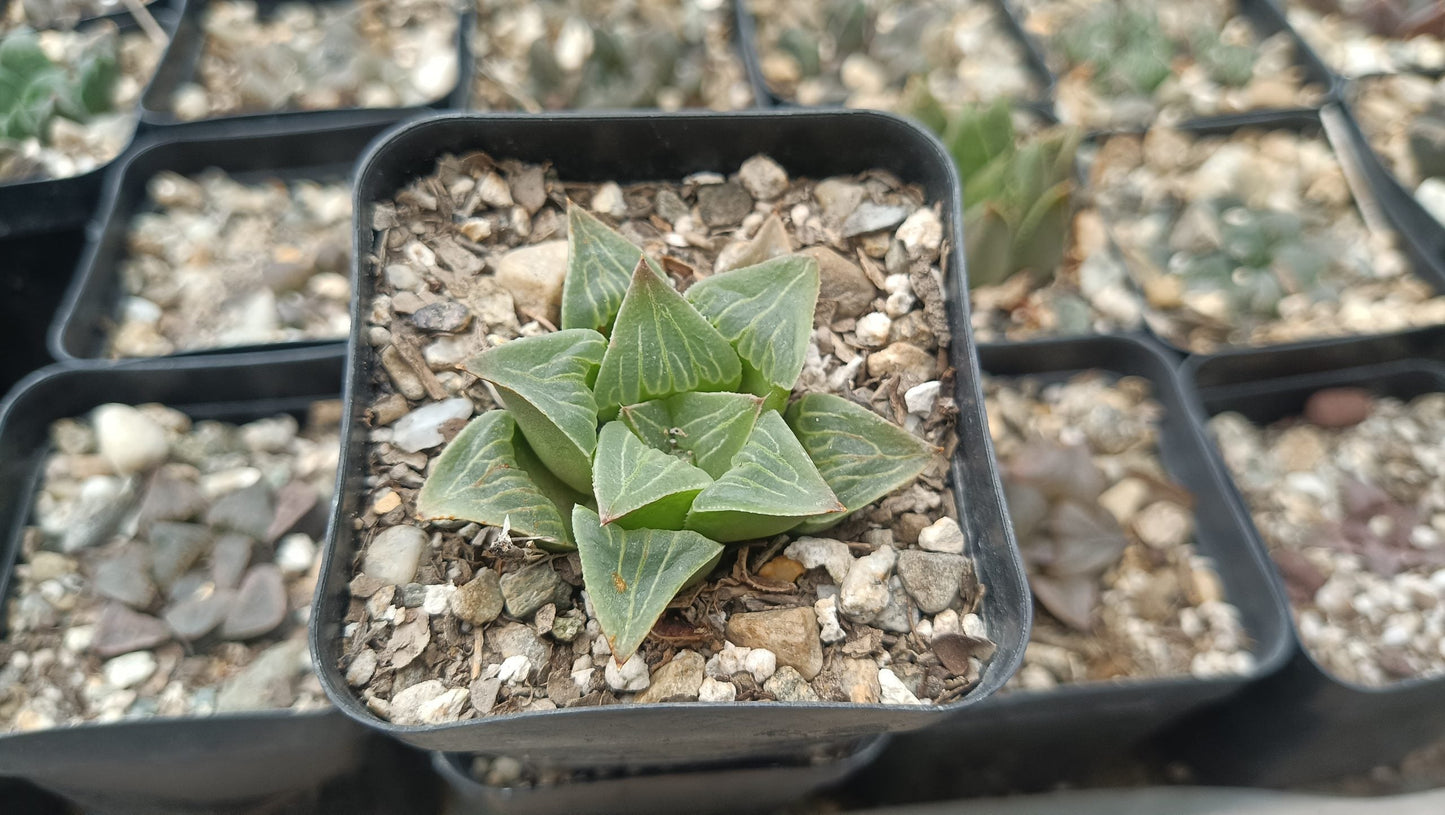Haworthia Pygmaea Var x Retusa Succulent - Elegant, Low-Maintenance Greenery for Any Space
Haworthia Pygmaea Var x Retusa Succulent - Elegant, Low-Maintenance Greenery for Any Space
Couldn't load pickup availability
The Haworthia Pygmaea Var x Retusa is a stunningly unique succulent that captures attention with its rosette-shaped, translucent leaves and remarkable resilience. Perfect for both beginners and experienced plant enthusiasts, this beauty effortlessly enhances any space. Its subtle green hues, coupled with a translucent "window" effect on each leaf tip, make it a captivating choice for offices, homes, or outdoor garden setups. This compact succulent adds a sense of calm and nature to your workspace, living room, or patio, blending seamlessly with modern and rustic décor alike. It’s ideal for low-light areas, adapting well to indoor spaces where other plants might struggle. Whether nestled among other plants or standing alone as a focal point, the Haworthia Pygmaea Var x Retusa is a low-maintenance, versatile choice that brings a natural touch wherever it’s placed.
Names and Synonyms
- Common Names: Star Window Plant, Cushion Aloe, Zebra Haworthia
- Botanical Name: Haworthia Pygmaea Var x Retusa
- Scientific Name: Haworthia pygmaea x retusa
- Synonyms: Haworthia retusa var. pygmaea, Haworthia var pygmaea
Care Tips for Haworthia Pygmaea Var x Retusa
- Light: This succulent prefers bright, indirect sunlight but tolerates low-light conditions well, making it ideal for indoor spaces.
- Watering: Water sparingly. Let the soil dry out completely between waterings to avoid root rot.
- Soil: Use a well-draining cactus or succulent mix for best results.
- Humidity: Thrives in average household humidity and doesn’t require extra humidity.
- Temperature: Ideal range is 60-80°F (15-27°C). Protect from frost in colder climates.
- Fertilizing: Feed lightly with a succulent fertilizer once in spring and summer for healthy growth.
- Repotting: Repot every 2-3 years in fresh soil to refresh nutrients.
Whether you're seeking to enrich your home or office with a touch of green or to create an outdoor succulent arrangement, the Haworthia Pygmaea Var x Retusa offers unparalleled beauty and ease of care. For more unique succulents and plant varieties, visit Frek’s website. And don’t forget to follow Frek on Facebook for updates on new products, exclusive offers, and plant care tips!
Share








